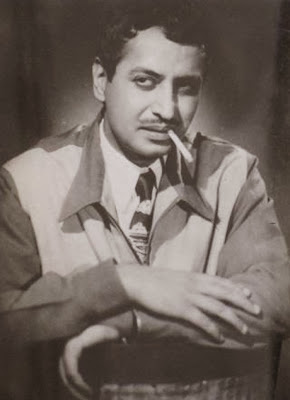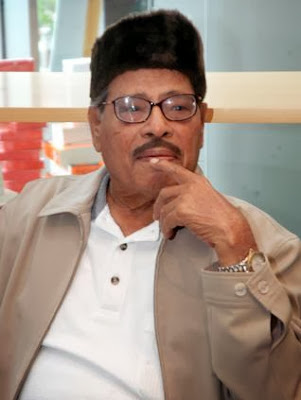In today’s world of Twitter, Facebook and instant
connectivity, the six degrees of separation that supposedly exist between us
must have definitely come down by a few degrees. We now live in times where computers can tell
two people in a second how many mutual friends they have, long lost school buddies
can be tracked down with powerful search engines. And a person’s entire life
history can be printed out with a few clicks of the mouse.
However, this charming story obviously is from those times
when post, telegraph and the radio were the only means of communication. Since
the digital age was still many decades away, people had to record information
on paper, often committing random bits and pieces of information to their
memory. Today we don't bother to, because all information is one computer boot-up
away.
Pran Krishan Sikand, who was born in the Balli Maharan
locality of Kishangarh in New Delhi, had come to Bombay after his acting stint
in Lahore had got him a foothold in the film industry. When he came to
Bombay, all he knew about his date of birth was the single shred of information
his buaji had told him – a fact that
he was born in the month of February in 1920. There was no need to get the exact date and
that's why Pran decided that he had been born on February 22nd, 1920…and that
was the date that was regarded as the gospel truth by all.
As his success as a villain grew, soon there came a time when
he decided to learn driving, acquire a fancy car (the statement one had to make
to show he had arrived) and of course, get a driving license. While the first
two steps required learning a skill and then acquiring a vehicle to perform
that skill, they were quickly completed. Now all Pran needed was a driving license.
When he saw the application form, the box inquiring his date
of birth niggled him for a few seconds, but then without much thought, he
filled in the date that he had assumed – February 22nd, 1920. And consequently,
that was the date recorded on his driving license.
Years passed and Pran’s position in the industry was so
formidable that producers would willingly wait till his dates were available.
He was probably among those rare actors who was considered for the film even
before the rest of the cast was – a testimony to his bravura performance in
every role.
As fame and success grew, so did the lines of journalists
eager for sound bytes and if possible, an entire interview. Pran himself was
surprised at the situation, he could understand a media frenzy for heroes who
played the good guys. Eventually though he had to give in to the media pressure
and articles about Pran appeared in a few film magazines.
His life story, out before the eyes of the world, duly mentioned
his date of birth as February, 22, 1920, the date of birth he had assumed. By a
stroke of luck, one of the residents of the Balli Maharan locality was informed
by a friend that their famous, one-time resident had featured in a magazine.
The man, proud at the fact that one from their mohalla had made it big, picked
up a copy of the magazine and took it home to read it.
He pored over ever word in the article – after all, this was
a child who had been born before his own eyes. He remembered how the midwife
had come to the door and announced the standard line that is immortalized in
so many films, “Mubarak ho…beta hua hai!” But there was something about one
line that Pran had answered that bothered him.
He went over the line again and saw what the article said – Pran was
born in Delhi on February 22nd, 1920. But how could that be? The man
remembered that February 22nd was the date when he had gone for an
interview for a job in the Delhi Municipality and he clearly remembered – he had
waved out to baby Pran’s father even as he was cradling Pran in his arms trying
to stop his bawling. That was not the day Pran was born – it was at least a
week or ten days earlier.
The next day, he searched through the municipality records and
there – his doubt about the date was proved right. There was no record of any
boy who was born in the Balli Maharan locality on February 22nd
1920. However there was such an entry for the date of February 12th,
1920.
He immediately wrote to Pran, introducing himself as a
gentleman old enough to be his father, a man who had witnessed Pran’s arrival
into the world. He further wrote how he had verified his doubts using the
municipal birth records and that Pran’s actual date of birth was February 12th,
1920.
When Pran read the letter, he was startled at the amazing
coincidences that had led to the correction. He wrote back to the man, thanking
him profusely for taking the effort to verify the fact. As he signed off the
letter before sending it, Pran marveled at power of the media and how it had
put him in touch with a distant person from the past.
What is revealing about this tale is that while it needed fame
to bring two people together correcting missing links from their past…today these
discoveries of long-lost friends and acquaintances are happening in the
thousands thanks to the Internet, everyday.










